The cabbage looper (Trichoplusia ni) is a North American native found throughout the U.S., Canada, and Mexico. It attacks all plants of the cabbage family, as well as lettuce, spinach, beets, peas, celery, parsley, potatoes, and some flower varieties.
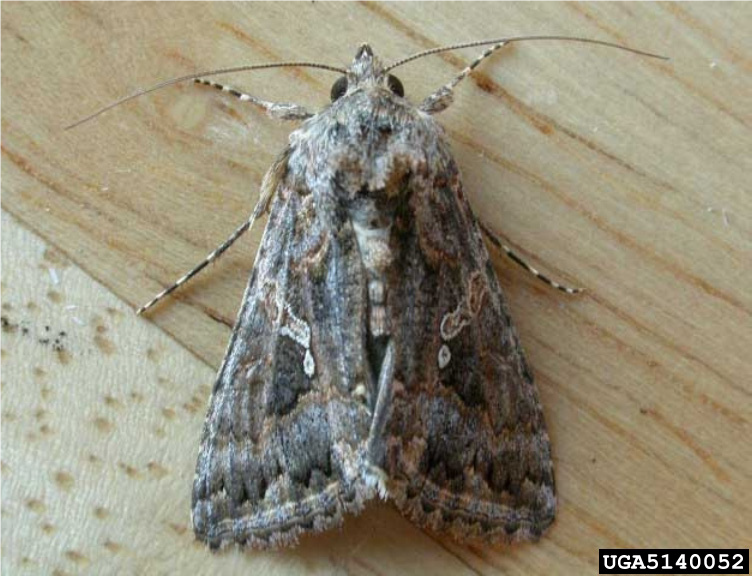
Description
The larva of the cabbage looper is a small, green caterpillar with a thin white to yellow stripe on each side of the body and two stripes down the center of the back. It has three pairs of legs near the head and three pairs of club-shaped legs (prolegs) on the abdomen. The area between these legs humps into a loop during movement, giving the insect its name. The adults are about 1" long and gray-brown in color with a 1½" wing span. The middle of the front of each wing has a silvery spot that resembles a figure 8.
Life Cycle
The cabbage looper does not overwinter outdoors in New Hampshire. It flies north from the south as early as mid-July, but often not until mid to late August. This accounts for the overlapping of stages in New Hampshire.
Once the adult reaches New Hampshire, it lays eggs singly on the upper surfaces of the host plant. Each female lays 275-350 eggs. Upon hatching, the larva immediately feeds upon the host plant and completes development in 2-4 weeks. Pupation also occurs on the host plant. The pupa can be found enclosed in a network of white threads on the host plant. The adult emerges in 2 weeks. This cycle occurs 2-3 times per season.
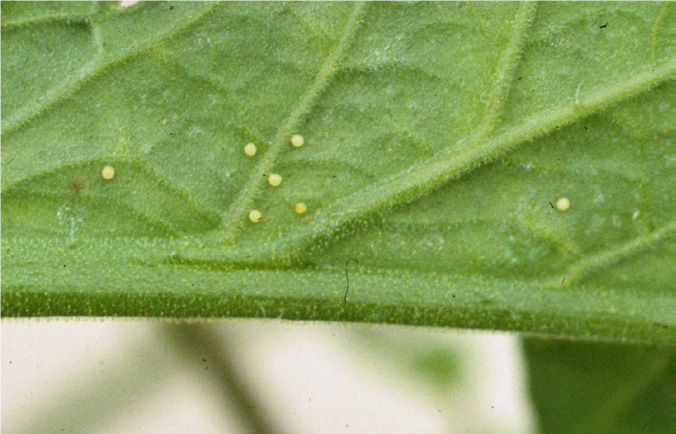
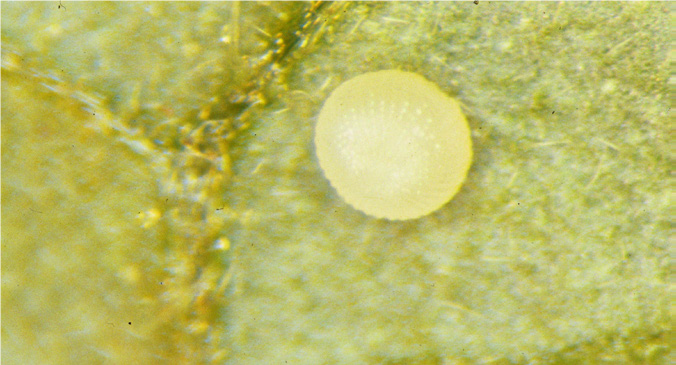
(bottom). Credits: Whitney Cranshaw, Colorado State University,
Bugwood.org.
Management
IPM Strategies:
- Monitoring - Beginning in mid-July, check leaves weekly for feeding damage. Later monitor for large larvae and droppings.
- Cultural Practices - Inspect transplants for larvae and destroy any you find. Use floating row covers if this is a yearly pest. Also, consider planting resistant plant varieties.
- Chemical Control -Typically, growers must make several applications to achieve good looper control. It is important to rotate insecticides, using products with different modes of action, rather than spraying with the same product repeatedly. This reduces the risks that the insects will become resistant to your insecticide.
Consult your county Agricultural Field Specialist for specific recommendations.
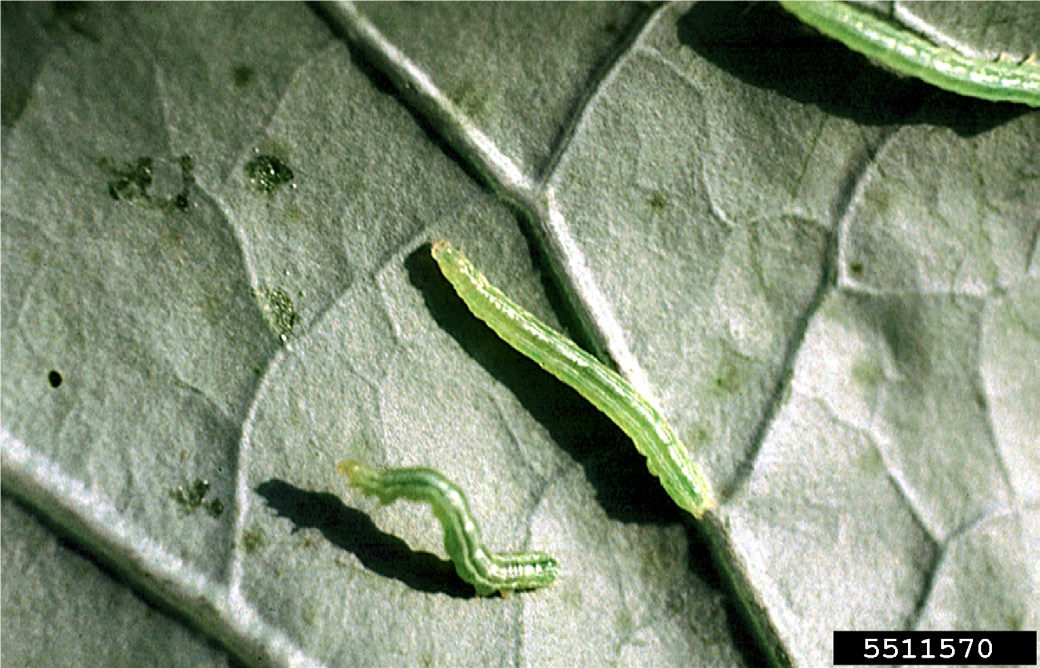
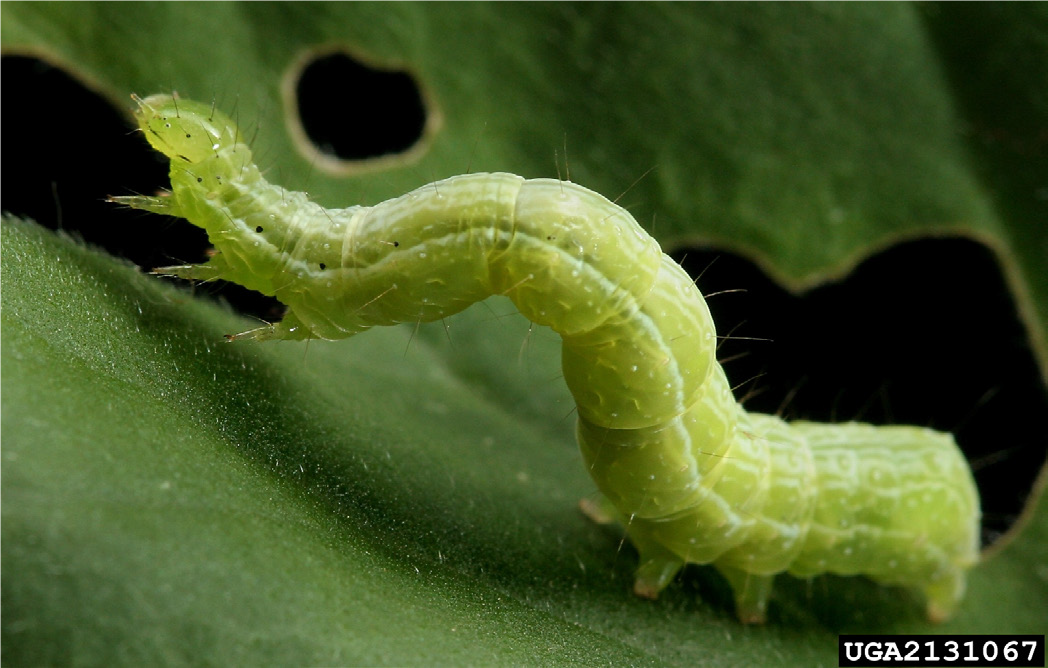
(Kansas State University; bottom). Bugwood.org.

Stop! Read the label on every pesticide container each time before using the material. Pesticides must be applied only as directed on the label to be in compliance with the law. All pesticides listed in this publication are contingent upon continued registration. Contact the Division of Pesticide Control at (603) 271-3550 to check registration status. Dispose of empty containers safely, according to New Hampshire regulations.
Download the resource for the complete factsheet.

